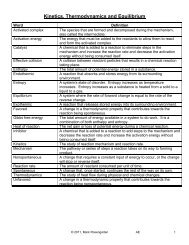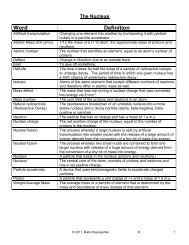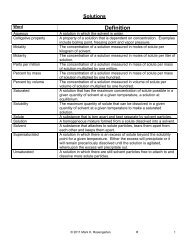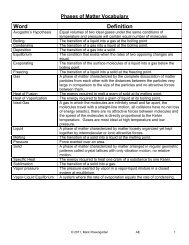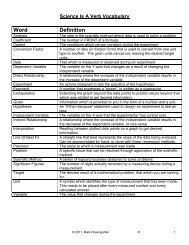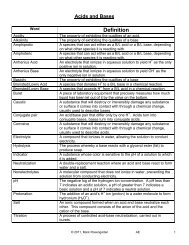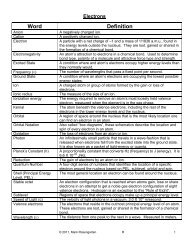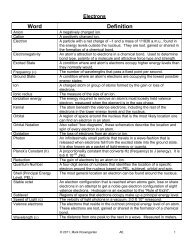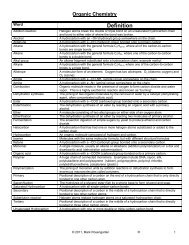Unit 6: Periodic Table and Bonding - Mark Rosengarten
Unit 6: Periodic Table and Bonding - Mark Rosengarten
Unit 6: Periodic Table and Bonding - Mark Rosengarten
You also want an ePaper? Increase the reach of your titles
YUMPU automatically turns print PDFs into web optimized ePapers that Google loves.
7) Complete the following chart, drawing the dot diagram of each element in the molecule <strong>and</strong> then the dot<br />
diagram of the molecule. If the formula is H 2 O, make sure you have two atoms of H <strong>and</strong> one of O in your dot<br />
diagram of the molecule.<br />
Formula Dot diagram for: Dot diagram for: Dot Diagram of Molecule<br />
F<br />
F<br />
F 2<br />
N 2<br />
N N<br />
HBr<br />
H<br />
Br<br />
H 2 O<br />
H<br />
O<br />
N<br />
H<br />
NH 3<br />
8) Identify the following bonds as being polar covalent or nonpolar covalent. For the polar covalent bonds,<br />
label the δ + <strong>and</strong> δ - ends.<br />
Bond END Polar or Nonpolar? If polar, label the δ + <strong>and</strong> δ - ends<br />
H – H<br />
H – C<br />
H – Cl<br />
9) Regarding the nonmetallic element, oxygen:<br />
H – H<br />
H – C<br />
H – Cl<br />
a) Oxygen atoms have ____ unpaired valence electrons. This means that they can form ____ covalent bonds.<br />
# #<br />
b) Two O atoms have ____ unpaired electrons between them. When they form O 2 , they share ____ electrons.<br />
# #<br />
c) Two O atoms form ____ bonds between them, also known as a ___________________ bond.<br />
# type<br />
d) Each covalent bond is a __________ of shared unpaired valence electrons that form ____________ orbitals.<br />
© 2011, <strong>Mark</strong> <strong>Rosengarten</strong> AE 24



